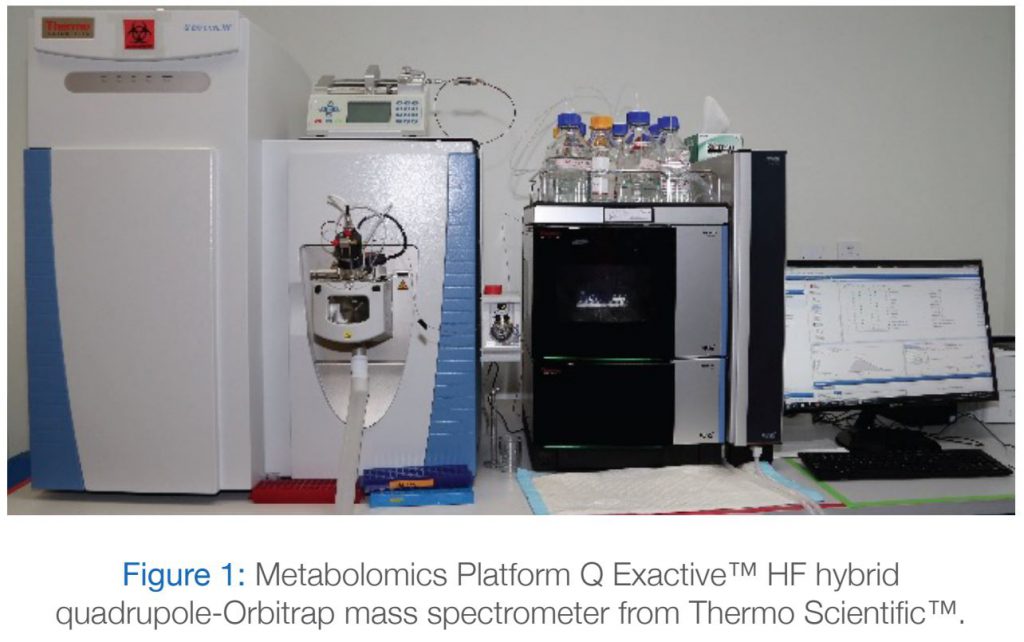
SPECIAL SERVICES FACILITY
In this issue of the newsletter, we will be highlighting the research being carried out by the Special Services Facility at DDI, led by Dr. Mohamed Abu-Farha.
RESEARCH UPDATE
Find out what is new within the Research Sector at DDI
Metabolomics At DDI
Published on 01/04/2019
Dasman Diabetes Institute (DDI) has been recognized regionally and internationally as a leading research institute in metabolic diseases. To better understand the role of various metabolites in the development of conditions like diabetes, DDI has acquired a state-of-the-art high-resolution metabolomics machine – the Q Exactive™ HF hybrid quadrupole-Orbitrap mass spectrometer from Thermo Scientific™ (Figure 1). This machine is capable of identifying and quantifying hundreds of proteins, peptides, lipids, glycans and small molecules accurately. The Q Exactive HF system combines a state-of-the-art technology that allows for high-resolution and accurate-mass (HR/AM) utilizing the revolutionary Orbitrap mass analyzer to deliver a superior multiple identification and quantification for metabolites. This means that researchers are able to detect and measure the amounts of metabolites and proteins in individuals with various conditions.
DDI is currently optimizing this technology to monitor the production of glucose (by the liver) and its use (by the brain and other organs) in patients with diabetes. Using stable isotope tracers, DDI’s researchers can estimate the amount of glucose produced and see how it is being used by insulin-sensitive tissues (like the pancreas), to better understand the development of insulin resistance in diabetes.

Stable isotope tracers are used in combination with a technique called hyperinsulinemic-euglycemic clamp, a method used to estimate the amount of insulin produced by the beta cells in the pancreas and estimate insulin resistance. Since insulin resistance is the main defect underlying the development of diabetes, developing such stable isotope-tracing technology to use with the Q Executive HF will help researchers better understand the pathophysiology of diabetes and patients’ response to various anti-diabetic drugs (Figure 2).



